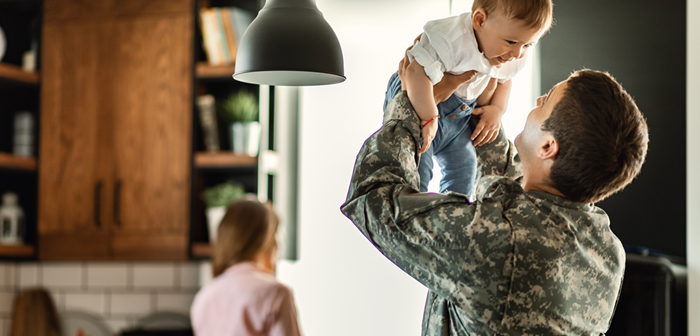Keeping your baby close to your heart is one of the most cherished experiences of parenthood. Babywearing, the practice of carrying your baby using a sling or carrier, has grown in popularity due to its numerous benefits. From promoting bonding to enhancing your baby’s development, babywearing offers a hands-free way to nurture your little one. However, it’s crucial to practice proper babywearing techniques to prevent back injuries and ensure both you and your baby are safe and comfortable.
This article discusses the importance of safe babywearing and offers tips to ensure comfort and safety.
The Benefits of Babywearing
Babywearing has been practiced for centuries across various cultures. Modern parents are embracing this age-old tradition, appreciating its convenience and the closeness it fosters. Some of the benefits include:
- Enhanced Bonding: Close physical contact strengthens the emotional bond between parent and child.
- Promotes Healthy Development: Studies show that carried babies cry 43% less overall and 54% less during evening hours. Increased interaction supports cognitive and emotional development.
- Hands-Free Convenience: Parents can perform daily tasks while keeping their baby secure.
- Physical Benefits: Babywearing can aid in digestion and reduce colic by keeping babies upright.
The Importance of Proper Babywearing Techniques
While babywearing offers many advantages, improper techniques can lead to discomfort or injury. It’s essential to understand how to use baby carriers correctly to prevent back strain and ensure your baby’s safety.
Risks of Improper Babywearing
- Back and Shoulder Pain: Incorrect positioning or unsupported carriers can cause strain on the wearer’s back and shoulders. According to the American Chiropractic Association, 80% of adults experience back pain at some point, and improper lifting or carrying techniques are common contributors.
- Hip Dysplasia in Infants: The International Hip Dysplasia Institute warns that improper leg positioning can affect your baby’s hip development.
- Suffocation Hazards: Incorrect placement can obstruct the baby’s airway. The U.S. Consumer Product Safety Commission reports that slings and carriers were associated with at least 14 suffocation deaths over a 20-year period.
Tips for Safe Babywearing
Choose the Right Carrier
Select a carrier that is appropriate for your baby’s age and size. There are several types:
- Wraps: Long pieces of fabric that wrap around you and your baby, offering versatility in positioning.
- Slings: Fabric worn over one shoulder, suitable for quick and easy use.
- Structured Carriers: Have straps and buckles for support, often preferred for older babies due to added stability.
Ensure the carrier meets safety standards set by organizations like the Juvenile Products Manufacturers Association (JPMA).
Follow the T.I.C.K.S. Rule
The T.I.C.K.S. rule is a widely recognized guideline for safe babywearing:
- Tight: The carrier should be tight, holding your baby close to prevent slumping.
- In view at all times: You should always be able to see your baby’s face without obstruction.
- Close enough to kiss: Your baby should be close enough to easily kiss their head.
- Keep chin off the chest: Ensure there is at least a finger-width of space under your baby’s chin to keep the airway open.
- Supported back: Your baby’s back should be supported in a natural position, without forcing them into an unnatural posture.
Position Your Baby Correctly
- Upright Position: The safest position for babies is upright, facing towards you. This position supports their head and neck and keeps the airway clear.
- Hip Positioning: Ensure your baby’s legs are in the ‘M’ position, with knees higher than the bottom and legs spread naturally to support healthy hip development.
- Head Support: For newborns and young infants, provide adequate support for the head and neck, especially if they cannot hold their head up independently.
Take Care of Your Own Posture
Maintaining good posture while babywearing is essential to prevent back injuries:
- Distribute Weight Evenly: Adjust the carrier so the weight is balanced across your shoulders and hips.
- Stand Straight: Keep your shoulders back and avoid leaning forward or hunching.
- Engage Your Core Muscles: Strengthening core muscles can provide additional support to your back.
According to the National Institute of Neurological Disorders and Stroke, good posture helps prevent musculoskeletal injuries.
Regularly Inspect Your Carrier
Before each use, check your carrier for signs of wear and tear:
- Fabric Integrity: Look for any tears, holes, or fraying in the fabric.
- Stitching: Ensure all seams are intact without loose threads.
- Buckles and Rings: Check for any cracks or damages to hardware components that could compromise safety.
Seek Professional Guidance
If you’re new to babywearing or have concerns about proper techniques, consider seeking guidance:
- Consult a Babywearing Educator: Professionals can provide personalized instruction and help you find the best carrier and fit.
- Attend Workshops: Many communities offer babywearing classes or support groups where you can learn and share experiences.
- Medical Consultation: If you have existing back problems or your baby has specific health considerations, consult a healthcare provider for tailored advice.
Expert Advice on Safety
Legal professionals emphasize the importance of safety in all parenting practices to prevent accidents and injuries. For instance, Joe Zaid & Associates, a personal injury law firm, advise parents to remain vigilant about product safety standards and to be informed about proper usage to reduce the risk of injury. Staying informed not only protects your family but also helps in making responsible choices regarding baby products.
Conclusion
Babywearing is a wonderful way to keep your little one close, fostering a deep bond while carrying on with your daily activities. By practicing proper techniques and prioritizing safety, you can enjoy the numerous benefits without risking personal injury. Remember, both your comfort and your baby’s safety are paramount.
“The safest way to carry your baby is to always keep them close enough to kiss.” – Babywearing International
Embrace these precious moments with confidence, knowing that with the right approach, babywearing can be a safe and enriching experience for both you and your child.





PG SLOT
Thank you for post PG SLOT
If you are looking for a quality and reliable online casino in Canada, BetVictor Casino is your best choice. Discover the world of gambling and start winning today in the best gambling games of this casino. It offers not only a wide range of games, but also first-class service, ensuring that every player will be satisfied with their experience. The casino cooperates with the world’s leading providers, giving players access to hundreds of games, ranging from classic slots to advanced video slots with 3D graphics and unique designs.
Special thanks to Henryclarkethicalhacker @ gmail com for exposing my cheating husband. Right with me I got a lot of evidences and proofs that shows that my husband is a f*** boy and as well a cheater ranging from his text messages, call logs, WhatsApp messages, deleted messages and many more, All thanks to Henryclarkethicalhacker @ gmail com or text, whatsapp, +17372340552, if not for him I will never know what has been going on for a long time. Contact him now and thank me later. Stay safe.